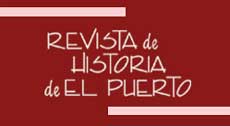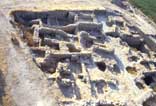
MANUSCRIPT SUBMISSION GUIDELINES
![]() The article heading will include the author’s name (in lowercase) with an asterisk at the end that makes reference to a footnote that will include the author’s position, place of work and email address.
The article heading will include the author’s name (in lowercase) with an asterisk at the end that makes reference to a footnote that will include the author’s position, place of work and email address.
The article title (in bold) will be included under the author’s name, in Spanish and English. Next, between the article’s title and the body of the text, the author will include an 8-line abstract, in Spanish and in English (in parallel columns), as well as five keywords in both languages. The abstract should clearly express the work’s objectives and results, and, if necessary, the methodology used.
![]() For manuscripts divided into sections and subsections, the corresponding number or letter will precede the epigraphs, as necessary.
For manuscripts divided into sections and subsections, the corresponding number or letter will precede the epigraphs, as necessary.
The footnotes will be indicated by a number after the corresponding manuscript. Footnotes will be referenced with a number after the corresponding manuscript.
![]() Documentary and bibliographic reference footnotes must be formatted as follows:
Documentary and bibliographic reference footnotes must be formatted as follows:
- Documents: Archive, section, file, record and, if applicable, folio number.
- Books and articles: Surname of author(s) and initial(s) of first name(s) in lowercase. Next, the year of publication and, where appropriate, the letter that appears in the bibliographic reference at the end of the text (when it is necessary to distinguish publications of the same author and year) will be indicated in parentheses. When it is an article, the year will be followed by a colon and the numbers of the pages cited.
![]() Bibliographic reference footnotes will be organised in alphabetical order at the end of the article, as follows:
Bibliographic reference footnotes will be organised in alphabetical order at the end of the article, as follows:
- Surname of author or authors (in uppercase).
- Publication year, distinguishing between a., b., c.,... if the one author has more than one work cited in that year (in parentheses).
- Titles of articles (in quotes).
- Titles of books or journals (in italics).
- Place of publication and editorial (for books).
- Volume and issue (for journals), and pages cited separated by a dash (for articles).
- If the article or book is a translated work and the reference concerns the translation, the year following the author’s name will refer to the original edition, and the year of the translated version will be included immediately before the pages cited.
- In the case of references published by electronic means, the source and date of consultation will be cited.
![]() Articles that are not properly and precisely referenced will not be accepted. The original articles must include reference footnotes.
Articles that are not properly and precisely referenced will not be accepted. The original articles must include reference footnotes.
![]() Literal citations (which must be relevant) will be included in italics. If these are more than four lines, the citation will be indented five spaces from the margin.
Literal citations (which must be relevant) will be included in italics. If these are more than four lines, the citation will be indented five spaces from the margin.
![]() Only tables and graphics considered essential for the article will be published (photographs, drawings, maps, etc). In any case, these must be presented as originals and conveniently formatted for printing. Furthermore, they must be accompanied by a title and, if necessary, an explanatory footnote, and their sources must be clearly indicated.
Only tables and graphics considered essential for the article will be published (photographs, drawings, maps, etc). In any case, these must be presented as originals and conveniently formatted for printing. Furthermore, they must be accompanied by a title and, if necessary, an explanatory footnote, and their sources must be clearly indicated.
![]() The use of words in other languages will not be accepted if these exist in Spanish or may be translated into Spanish. Concerning spelling, writers must follow the guidelines included in the manual, Ortografía de la Lengua Española, (edition revised by the Academies of the Spanish Language) Madrid, Real Academia Española and Espasa Calpe, S.A., 1999.
The use of words in other languages will not be accepted if these exist in Spanish or may be translated into Spanish. Concerning spelling, writers must follow the guidelines included in the manual, Ortografía de la Lengua Española, (edition revised by the Academies of the Spanish Language) Madrid, Real Academia Española and Espasa Calpe, S.A., 1999.
![]() The minimum length for the double-spaced articles is 12 pages, in DIN A4 format; and the maximum length is thirty-five pages. The Editorial Board will consider the acceptance of longer studies, which will be published, depending on the case, in one or various consecutive issues of the journal. The length of introductory studies of documents and of debates will not exceed twenty-five pages, with justified exceptions. The length of reviews will be from three to seven pages, as the case may be.
The minimum length for the double-spaced articles is 12 pages, in DIN A4 format; and the maximum length is thirty-five pages. The Editorial Board will consider the acceptance of longer studies, which will be published, depending on the case, in one or various consecutive issues of the journal. The length of introductory studies of documents and of debates will not exceed twenty-five pages, with justified exceptions. The length of reviews will be from three to seven pages, as the case may be.
![]() The manuscript will be formatted with the following specifications:
The manuscript will be formatted with the following specifications:
- the author’s name in lowercase, font size 11
- the title of the work in uppercase, bold, font size 11
- the headings “Resumen”, “Abstract”, “Palabras clave” and “Keywords” in lowercase, bold, font size 9
- the contents of the abstracts and the keywords in font size 9
- the main text in font size 11
- the titles of the sections in lowercase, bold, font size 11
- the titles of the tables and drawings in lowercase, font size 10
- notes for tables, graphs and drawings in font size 9
- footnotes in font size 8
- annex and appendix titles in lowercase, bold, font size 11 and the text for these in font size 10
- bold lettering and underlines will not be accepted in the body of the text, unless they are part of a literal citation
- bibliographic references, at the end of the text, in font size 10
![]() The manuscripts (articles, documents, revisions, debates, etc.) will be submitted to the journal’s Consejo Editorial (Editorial Board) by email secretaria@revistadehistoriade-elpuerto.org.
The manuscripts (articles, documents, revisions, debates, etc.) will be submitted to the journal’s Consejo Editorial (Editorial Board) by email secretaria@revistadehistoriade-elpuerto.org.
![]() The Editorial Board of The Journal of the History of El Puerto will acknowledge receipt of the manuscripts immediately. The Editorial Board’s decision concerning the initial acceptance or rejection of the manuscripts for the journal will be communicated to the authors approximately 2 months after the material is received. This decision may be conditional on the introduction of modifications in the original text.
The Editorial Board of The Journal of the History of El Puerto will acknowledge receipt of the manuscripts immediately. The Editorial Board’s decision concerning the initial acceptance or rejection of the manuscripts for the journal will be communicated to the authors approximately 2 months after the material is received. This decision may be conditional on the introduction of modifications in the original text.
![]() The authors will have 5 days to revise the printing drafts, consisting of verification that the drafts correspond to the originals. Only exceptionally and for good cause will modifications be admitted.
The authors will have 5 days to revise the printing drafts, consisting of verification that the drafts correspond to the originals. Only exceptionally and for good cause will modifications be admitted.





